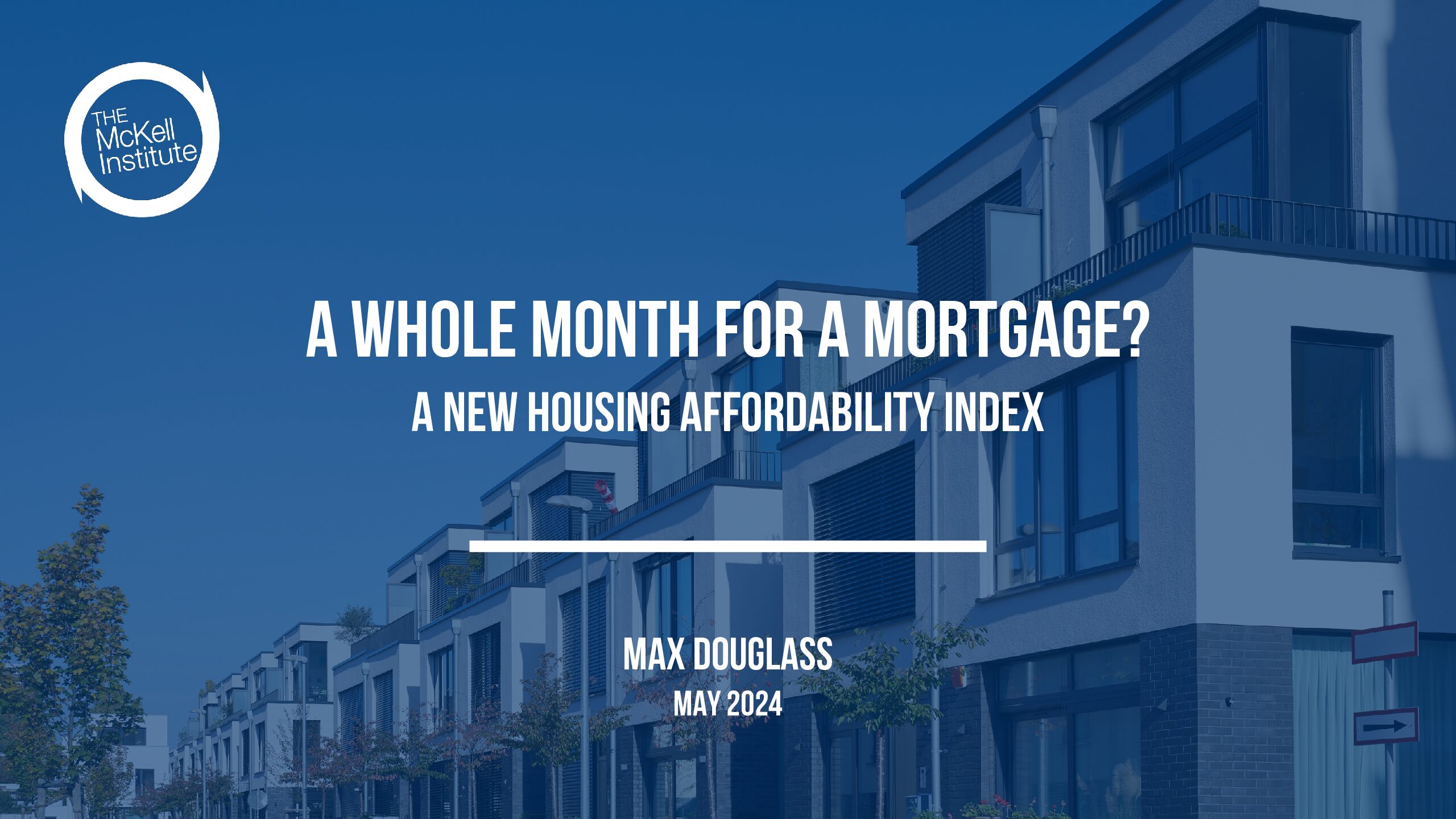To speak of a ‘housing crisis’ in Australia is increasingly trite. Housing in Australia is now simply a disaster.
Month after month, indicator after indicator, the picture gets increasingly bleak. Vacancy rates across all major capital cities are at record lows, rents are increasing at double-digit speeds not seen for years, interest rates are at decade peak, and house price growth shows no sign of slowing down. This is all occurring while above-target inflation eats away at wage growth. While all of these indicators are grim, it is misplaced to look at them in isolation when thinking about the elusive notion of ‘housing affordability’.
Thinking about housing unaffordability
These indicators alone never tell the entire story of affordability. Looking at house prices in isolation from interest rates and wages tells us nothing about the cost of servicing a mortgage, nor how difficult this is for the average worker or couple. Similarly, looking to interest rates in isolation from house prices tells us nothing about the principal on which the interest is calculated. A full picture of housing ‘affordability’ requires consideration of the interplay of all these constantly changing variables.
Several widely used indicators have attempted to grapple with this complexity. For example, the median ‘house-to-income’ ratio tracks the ratio between the median dwelling price and the median income.[1] While the results of this indicator are jarring, with dwellings now costing 10.5 times the median income; they are not responsive to changes in interest rates. Indeed, households paying 8 per cent per annum on a 30-year mortgage of $1,000,000 face a vastly different standard of living compared to those under the same conditions paying 3 per cent per annum.
The ‘Housing Affordability Index’
The McKell Institute’s ‘Housing Affordability Index’ integrated all of these moving parts into a single time-series measure. Using available data on median full time weekly earnings, median dwelling prices and averages of mortgage lending interest rates, we have constructed a measure on how many workdays per month would be required to service a 25-year mortgage with an upfront 20 per cent deposit. We track this indicator in all states and territories, and all capital cities, from the mid 1990s until late 2023.
Table 1 displays the number of workdays required to service a median mortgage by a worker earning the median weekly income at a market interest rate.
|
Table 1: Housing Affordability Index, Capital Cities: December 2023 |
|||||||
| Sydney | Melbourne | Brisbane | Adelaide | Perth | Hobart | Darwin | Hobart |
| 21.5 | 15.0 | 15.3 | 15.2 | 11.3 | 14.3 | 10.2 |
15.0 |
The baseline results are striking—particularly in Sydney. A median worker in Sydney, servicing a median mortgage at a market interest rate would be required to work almost 21 days to meet their monthly repayment. This figure of 21.5 has just fallen from its all-time high of 22.7 days in June 2023.
The results are even more concerning when we consider the fact that this model accounts only for workdays. Assuming a standard 5-day workweek, there are approximately 21.7 workdays in a typical calendar month. As Table 2 details, this means a Sydney worker on a median salary servicing a median mortgage would dedicate 99.1 per cent of their work time to servicing their mortgage. Melbourne, Brisbane, Adelaide and Hobart all maintain proportions of over 65 per cent, while Perth and Darwin are closer to 50 per cent.
|
Table 2: Proportion of workdays dedicated to servicing mortgage |
|||||||
| Sydney | Melbourne | Brisbane | Adelaide | Perth | Hobart | Darwin | Hobart |
| 99.1% | 69.1% | 70.6% | 70.2% | 51.9% | 65.7% | 46.9% |
69.1% |
Two other final considerations bear on the interpretation of the results. Firstly, our model uses data on pre-tax income. Once income taxation is accounted for, affordability would look drastically worse. For example, median full-time pre-tax weekly earnings in Australia are $1,600 per week, equating to $83,200 per annum. This is taxed an effective gross rate of roughly 21 per cent. Incomes in our model are therefore, on average, overstated.
Secondly, our entire model is premised on the fact that the hypothetical median worker would have access to a 20 per cent home deposit in the first place. Based on December 2023 dwelling prices in Sydney, this is a sum of well over $200,000. Except with external assistance, it is difficult to believe that any median worker would be able to scrape such a sum together while navigating in Sydney’s skyrocketing rental market.
Data is available for areas outside of capital cities from 2003. While in absolute terms the number of days is considerably lower than in the capital cities, unaffordability is reaching levels not seen since immediately before the financial crisis. Our results are also likely underestimates of the true number of workdays requires, as median weekly earnings are generally lower in regional areas.[2]
|
Table 3: Housing Affordability Index, Regions: September 2023 |
||||||
| Rest of NSW | Rest of Vic | Rest of Qld | Rest of SA | Rest of WA | Rest of Tas |
Rest of NT |
| 13.9 | 11.2 | 12.1 | 8.8 | 8.2 | 11.2 |
8.8 |
When we look to Australia as a whole, we see housing affordability at its worst level over the last 25 years, reaching a peak of 15.1 workdays in June 2023.
Australia compared
While lending interest rates, house prices, and wages are not easily independently compared between countries in a housing context, the Housing Affordability Index allows for a relatively fruitful comparison between countries and subnational units.
Australia does not compare favourably to other countries of similar economic development, but it is by no means the worst.
|
Table 4: Housing Affordability Index, National Comparison, November/December 2023 |
||||
|
Country |
Australia | New Zealand | Canada | United Kingdom |
| Index Value | 15.05 | 23.86 | 14.66 |
9.70 |
Yet these results are no reason for celebration. Each of New Zealand, Canada, and the United Kingdom are all facing their own ‘housing crisis’ decades in the making.
Australian cities, particularly Sydney and Melbourne, do not compare favourably either. The housing affordability index in London, a city known for its unaffordability, is only 13.97, compared to 15.0 for Melbourne and 21.5 for Sydney. In other words, it is harder for the median worker to service the average mortgage in Melbourne or Sydney than it is in London.
Where to from here?
Australian housing costs, particularly in Sydney, are at levels never seen before. To work full time was previously sure sign that one could afford a mortgage, but now that is no longer the case. Before tax, and before a $200,000 deposit, a median worker buying the median Sydney home would need to work almost 21 days per month to simply meet their mortgage repayments. Assuming a five-day work week, over 96 per cent of their time would be dedicated to servicing their mortgage. But this trend is not limited to Sydney. All Australian capital cities (and regions) are reaching record levels of unaffordability.
Household budgets and housing markets are at breaking point. Australia’s two largest capital cities are now more unaffordable than London. There will be no panacea to Australia’s housing crisis, and short-term relief looks unlikely. But if this data makes anything clear, it is that status-quo is both extraordinary and intolerable.
[1] See, eg, Michael Bleby, ‘Housing unaffordability hits grim new peak’, The Australian Financial Review (online, 18 September 2022) <https://www.afr.com/property/residential/housing-unaffordability-hits-grim-new-peak-20220916-p5bimk>.
[2] See, eg, John Daley, Danielle Wood and Carmela Chivers, Regional patterns of Australia’s economy and population (Report, 2017) < https://grattan.edu.au/wp-content/uploads/2017/08/890-Regional-patterns.pdf>.



SOCIAL SHARE